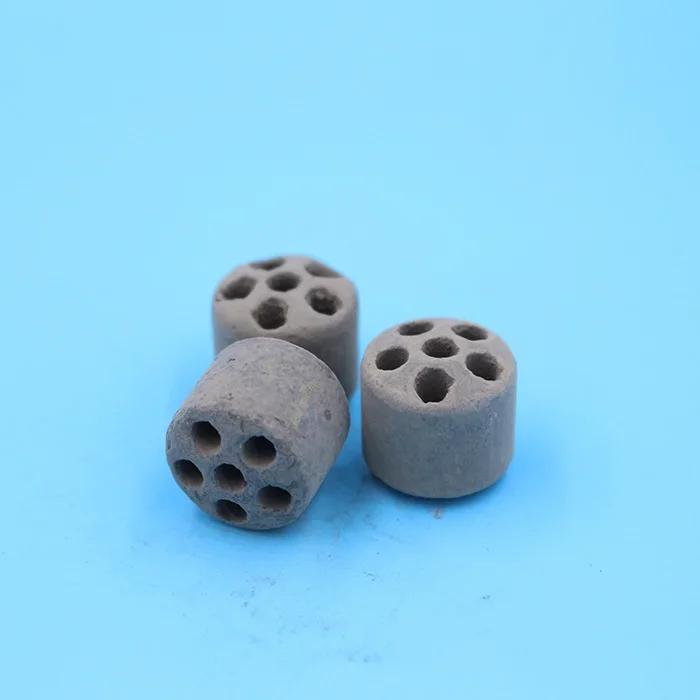Understanding the Catalytic Process of Six-Hole Column Primary Reformer Catalysts
In the world of petrochemical industry, Six-Hole Column Primary Reformer Catalysts play a crucial role in facilitating the production of key chemicals. This blog aims to provide a comprehensive understanding of the catalytic process involved in these catalysts, shedding light on their significance and impact on industrial processes.
I. The Basics of Six-Hole Column Primary Reformer Catalysts
Six-Hole Column Primary Reformer Catalysts are highly specialized catalysts used in the petrochemical industry to drive important chemical reactions. These catalysts are primarily employed in the primary reforming process, which is a key step in the production of chemicals such as ammonia and methanol.
A. Definition and Purpose
Six-Hole Column Primary Reformer Catalysts are designed to promote specific chemical reactions by providing an active surface for the reactants to interact. They act as facilitators, increasing the rate of the desired reactions while minimizing unwanted side reactions.
B. Composition and Structure
These catalysts are typically composed of a combination of metal oxides, such as nickel, cobalt, and iron, supported on a high-surface-area material, such as alumina. The specific composition and structure of the catalysts can vary depending on the desired reaction and the operating conditions.
C. Key Properties and Characteristics
Six-Hole Column Primary Reformer Catalysts possess several important properties that make them suitable for their intended applications. These include high activity, selectivity, stability, and resistance to deactivation. The catalysts are carefully engineered to withstand the harsh conditions encountered during the catalytic process.

II. The Catalytic Process of Six-Hole Column Primary Reformer Catalysts
The catalytic process involving Six-Hole Column Primary Reformer Catalysts can be divided into several key steps, each playing a crucial role in the overall reaction.
A. Initial Reactions: Steam Reforming
The primary reforming process begins with steam reforming, where a hydrocarbon feedstock, typically natural gas or naphtha, is mixed with steam and passed over the catalyst bed. This step involves the conversion of hydrocarbons into synthesis gas, a mixture of hydrogen (H2) and carbon monoxide (CO).
1. Introduction to Steam Reforming
Steam reforming is a highly endothermic reaction that requires the input of heat to drive the process. The catalysts facilitate the breaking of carbon-carbon and carbon-hydrogen bonds in the hydrocarbon molecules, resulting in the formation of hydrogen and carbon monoxide.
2. Role of Catalysts in Steam Reforming
The Six-Hole Column Primary Reformer Catalysts provide an active surface for the steam reforming reaction to occur. They promote the desired reactions while minimizing side reactions, such as coke formation, which can lead to catalyst deactivation.
3. Chemical Reactions Involved
The primary reactions in steam reforming include the endothermic reactions of methane (CH4) and water (H2O) to produce carbon monoxide and hydrogen:
CH4 + H2O → CO + 3H2
B. Conversion of Hydrocarbons
Following steam reforming, the synthesis gas undergoes further conversion reactions to produce the desired chemicals, such as ammonia or methanol.
1. Hydrocarbon Feedstock
The choice of hydrocarbon feedstock depends on the desired end product. Natural gas, which primarily consists of methane, is commonly used for ammonia synthesis, while methanol production often utilizes a mixture of carbon monoxide and hydrogen.
2. Role of Catalysts in Hydrocarbon Conversion
The Six-Hole Column Primary Reformer Catalysts play a crucial role in the conversion of synthesis gas into the desired chemicals. They facilitate the necessary reactions, such as the synthesis of ammonia or methanol, by providing an active surface for the reactants to interact.
3. Catalytic Reactions and Mechanisms
The specific catalytic reactions and mechanisms involved in the conversion of synthesis gas depend on the desired end product. For example, in ammonia synthesis, the catalyst promotes the reaction between nitrogen (N2) and hydrogen to form ammonia (NH3):
N2 + 3H2 → 2NH3
C. Heat Management and Catalyst Regeneration
During the catalytic process, heat management is crucial to maintain the optimal operating conditions and prevent catalyst deactivation.
1. Heat Transfer in the Catalytic Process
The exothermic reactions that occur during the conversion of synthesis gas generate heat. Effective heat transfer mechanisms, such as the use of heat exchangers, are employed to control the temperature and ensure the stability of the catalyst bed.
2. Catalyst Deactivation and Regeneration Techniques
Over time, catalysts can become deactivated due to various factors, such as the deposition of unwanted substances on the catalyst surface. Catalyst regeneration techniques, such as controlled oxidation or reduction, are employed to restore the activity and performance of the catalysts.

III. Significance and Applications of Six-Hole Column Primary Reformer Catalysts
A. Petrochemical Industry
Six-Hole Column Primary Reformer Catalysts play a vital role in the petrochemical industry, enabling the production of key chemicals. They are extensively used in the synthesis of ammonia and methanol, which serve as building blocks for various industrial processes.
1. Production of Key Chemicals
Ammonia is primarily used as a nitrogen fertilizer, while methanol finds applications in the production of formaldehyde, acetic acid, and other chemicals. The catalytic process involving Six-Hole Column Primary Reformer Catalysts ensures efficient and reliable production of these essential chemicals.
2. Role in Ammonia and Methanol Synthesis
The catalysts used in ammonia and methanol synthesis are carefully selected and optimized to achieve high conversion rates and selectivity. The efficiency of these catalysts directly impacts the overall process economics and the quality of the end products.
B. Energy Efficiency and Environmental Impact
The use of Six-Hole Column Primary Reformer Catalysts in industrial processes contributes to improved energy efficiency and reduced environmental impact.
1. Improving Energy Efficiency in Industrial Processes
The catalytic process involving Six-Hole Column Primary Reformer Catalysts allows for the efficient conversion of hydrocarbons into valuable chemicals. This helps to minimize energy wastage and optimize resource utilization.
2. Reducing Greenhouse Gas Emissions
By enabling the production of chemicals through efficient catalytic processes, Six-Hole Column Primary Reformer Catalysts contribute to reducing greenhouse gas emissions. The use of catalysts allows for lower operating temperatures and pressures, resulting in reduced energy consumption and environmental footprint.
IV. Advances and Future Developments
The field of Six-Hole Column Primary Reformer Catalysts continues to advance, with ongoing research and development efforts aimed at improving catalyst performance and exploring new applications.
A. Catalyst Design and Optimization
Researchers are continuously working on developing catalysts with enhanced activity, selectivity, and stability. Novel catalyst formulations and structures are being explored to improve the efficiency and effectiveness of the catalytic process.
B. Integration of New Technologies
Advancements in process engineering and technology integration are being explored to further optimize the catalytic process. This includes the integration of advanced heat management systems, improved reactor designs, and the use of computational modeling techniques for catalyst design and optimization.
C. Emerging Trends in Six-Hole Column Primary Reformer Catalysts
Emerging trends in the field of Six-Hole Column Primary Reformer Catalysts include the development of catalysts with improved resistance to deactivation, the exploration of alternative feedstocks, and the integration of renewable energy sources into the catalytic process.

Conclusion
Six-Hole Column Primary Reformer Catalysts are vital components in the petrochemical industry, enabling the production of essential chemicals. Understanding the catalytic process involved in these catalysts is crucial for optimizing industrial processes, improving energy efficiency, and reducing environmental impact. As advancements continue to be made, the future holds promising developments in the field of Six-Hole Column Primary Reformer Catalysts, paving the way for more sustainable and efficient petrochemical production.




